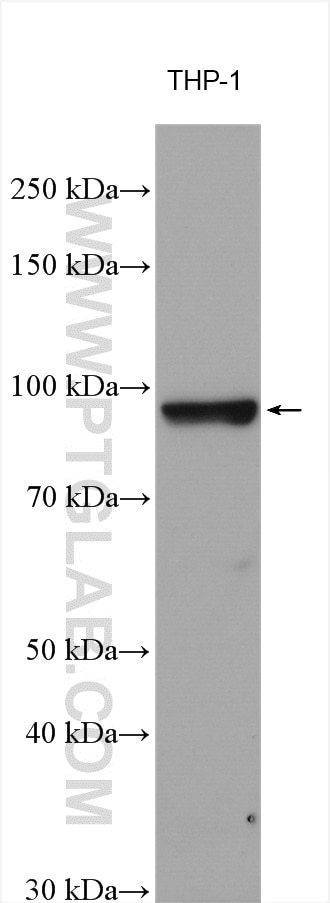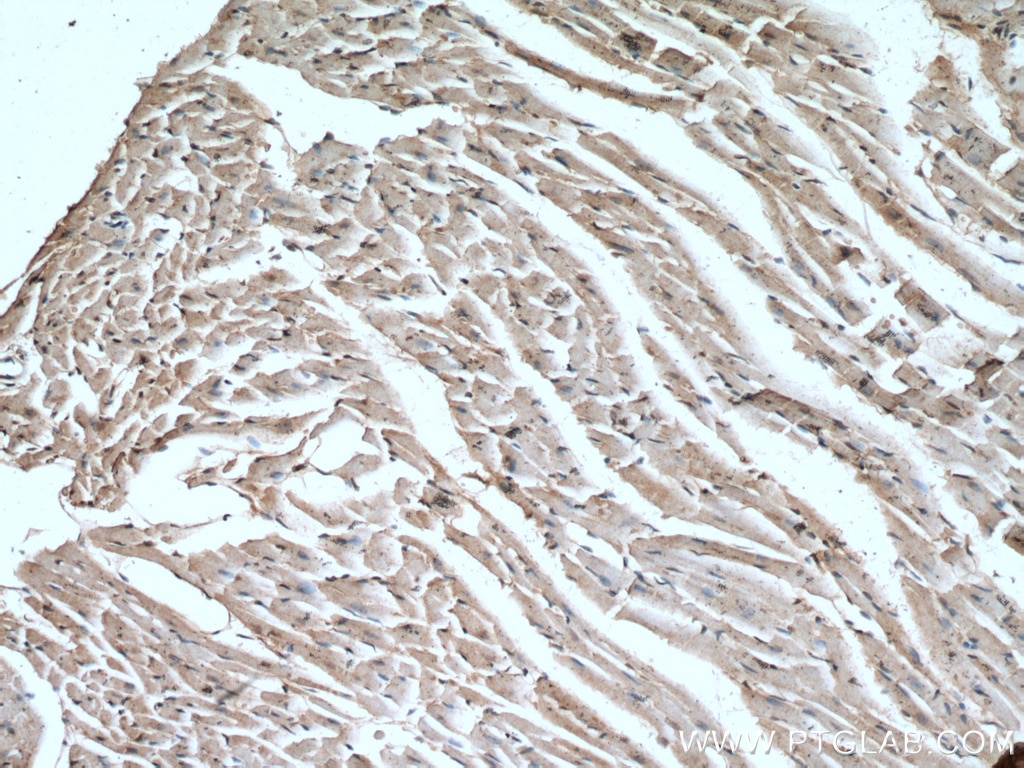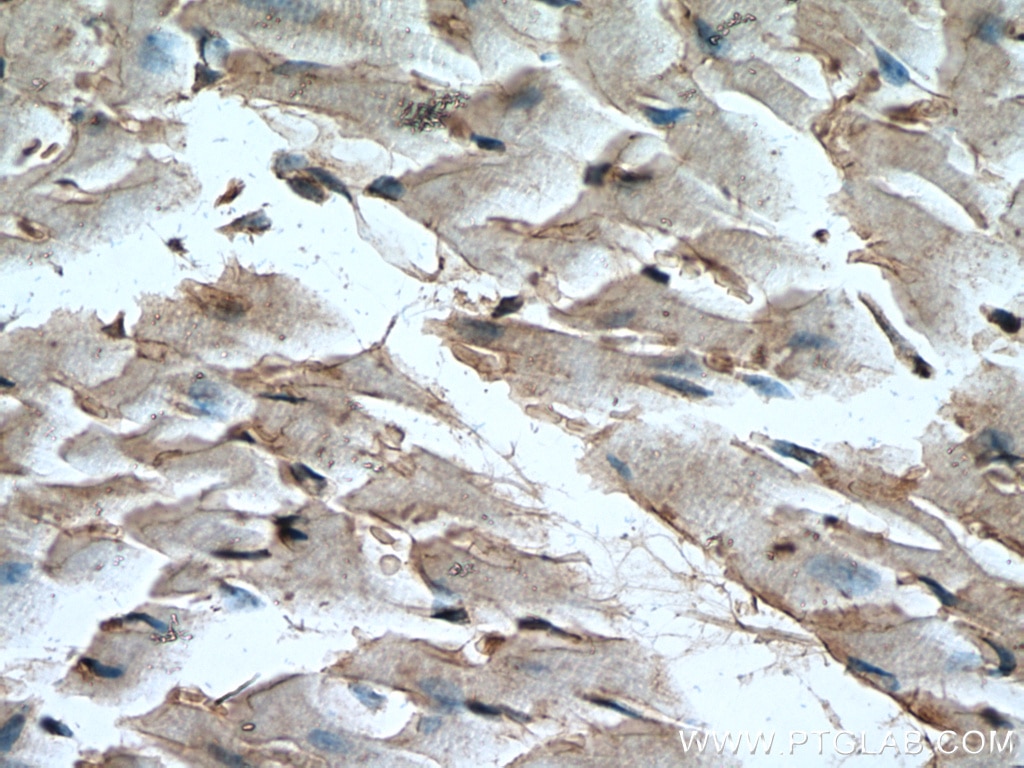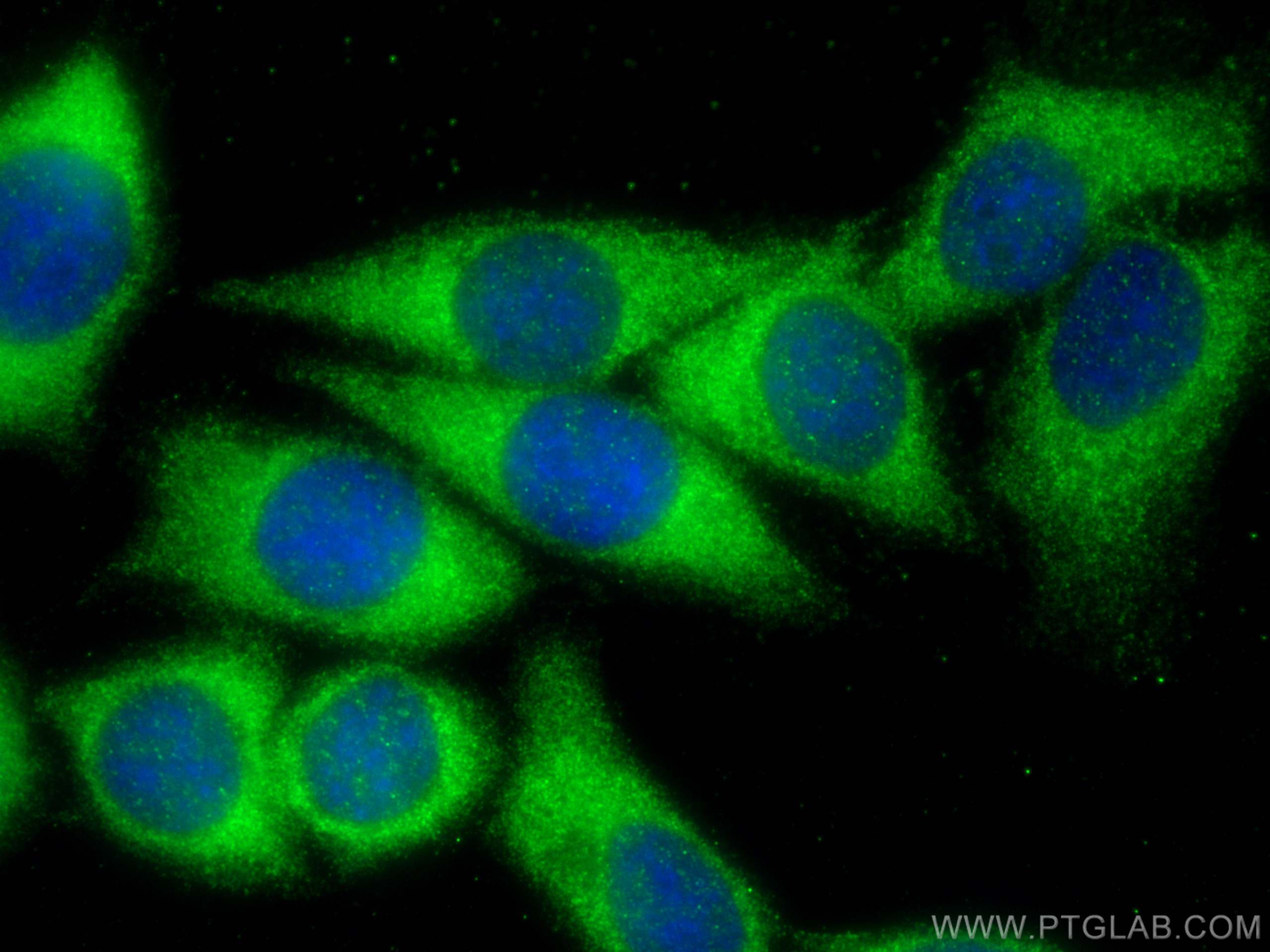Anticorps Polyclonal de lapin anti-LRRC8C
LRRC8C Polyclonal Antibody for WB, IHC, IF/ICC, ELISA
Hôte / Isotype
Lapin / IgG
Réactivité testée
Humain, rat, souris
Applications
WB, IHC, IF/ICC, ELISA
Conjugaison
Non conjugué
N° de cat : 21601-1-AP
Synonymes
Galerie de données de validation
Applications testées
| Résultats positifs en WB | cellules THP-1, |
| Résultats positifs en IHC | tissu cardiaque de souris, il est suggéré de démasquer l'antigène avec un tampon de TE buffer pH 9.0; (*) À défaut, 'le démasquage de l'antigène peut être 'effectué avec un tampon citrate pH 6,0. |
| Résultats positifs en IF/ICC | cellules HepG2, |
Dilution recommandée
| Application | Dilution |
|---|---|
| Western Blot (WB) | WB : 1:500-1:2000 |
| Immunohistochimie (IHC) | IHC : 1:50-1:500 |
| Immunofluorescence (IF)/ICC | IF/ICC : 1:50-1:500 |
| It is recommended that this reagent should be titrated in each testing system to obtain optimal results. | |
| Sample-dependent, check data in validation data gallery | |
Applications publiées
| WB | See 6 publications below |
| IF | See 2 publications below |
Informations sur le produit
21601-1-AP cible LRRC8C dans les applications de WB, IHC, IF/ICC, ELISA et montre une réactivité avec des échantillons Humain, rat, souris
| Réactivité | Humain, rat, souris |
| Réactivité citée | rat, Humain, souris |
| Hôte / Isotype | Lapin / IgG |
| Clonalité | Polyclonal |
| Type | Anticorps |
| Immunogène | LRRC8C Protéine recombinante Ag16213 |
| Nom complet | leucine rich repeat containing 8 family, member C |
| Masse moléculaire calculée | 803 aa, 92 kDa |
| Poids moléculaire observé | 92 kDa |
| Numéro d’acquisition GenBank | BC113973 |
| Symbole du gène | LRRC8C |
| Identification du gène (NCBI) | 84230 |
| Conjugaison | Non conjugué |
| Forme | Liquide |
| Méthode de purification | Purification par affinité contre l'antigène |
| Tampon de stockage | PBS with 0.02% sodium azide and 50% glycerol |
| Conditions de stockage | Stocker à -20°C. Stable pendant un an après l'expédition. L'aliquotage n'est pas nécessaire pour le stockage à -20oC Les 20ul contiennent 0,1% de BSA. |
Informations générales
LRRC8C (Leucine-rich repeat-containing protein 8C), also known as AD158, is a non-essential component of the volume-regulated anion channel (VRAC, also known as VSOAC channel), which is required to maintain a constant cell volume in response to extracellular or intracellular permeability changes. The VRAC channel conducts iodide better than chloride and can also conduct organic osmolytes like taurine. The VRAC channel also mediates transport of immunoreactive cyclic dinucleotide GMP-AMP (2'-3'-cGAMP), an immune messenger produced in response to DNA virus in the cytosol (PMID:24790029; 26824658; 28193731).
Protocole
| Product Specific Protocols | |
|---|---|
| WB protocol for LRRC8C antibody 21601-1-AP | Download protocol |
| IHC protocol for LRRC8C antibody 21601-1-AP | Download protocol |
| IF protocol for LRRC8C antibody 21601-1-AP | Download protocol |
| Standard Protocols | |
|---|---|
| Click here to view our Standard Protocols |
Publications
| Species | Application | Title |
|---|---|---|
Nat Commun TET2-mediated tumor cGAS triggers endothelial STING activation to regulate vasculature remodeling and anti-tumor immunity in liver cancer | ||
Diabetes Metab J Single-Cell Landscape and a Macrophage Subset Enhancing Brown Adipocyte Function in Diabetes | ||
bioRxiv LRRC8 complexes are adenosine nucleotide release channels regulating platelet activation and arterial thrombosis | ||
bioRxiv Lysosomal LRRC8 complex regulates lysosomal pH, morphology and systemic glucose metabolism | ||
Sci Adv 2'3'-cGAMP interactome identifies 2'3'-cGAMP/Rab18/FosB signaling in cell migration control independent of innate immunity | ||
Sci Adv Regulation of volume-regulated anion channels alters sensitivity to platinum chemotherapy |
Avis
The reviews below have been submitted by verified Proteintech customers who received an incentive for providing their feedback.
FH Joshua (Verified Customer) (08-16-2021) | This antibody was incubated at 4 degrees C O/N, in 5% Milk, and at a dilution ratio of 1:1,000. A secondary antibody at a dilution ratio of 1:5,000 was used. The acquired western blot image was achieved at an exposure time of 60 seconds. This product was vital in visualizing LRRC8c in both HUVECs and mouse lung tissue.
|





